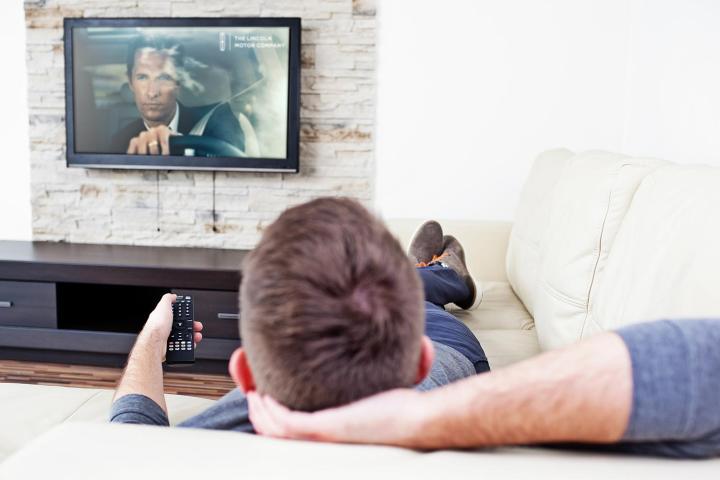
Brought to light by a recent post on Reddit, a Youtube poster with far too much time on his hands (no pun intended) exposed this dubious device of commercial chicanery with a scientific experiment of sorts. Using a live airing of Seinfeld on TBS, the Youtube user in question pulled that same episode up from a 10-year-old digital recording from Fox Chicago — don’t ask why he had it, it’s the Internet — discovering the live episode gained 15 seconds on its aged counterpart in about 3 minutes. Expanded over the entire episode, it amounts to around 2 minutes of free airtime per episode, filled in by glorious commercials.
Networks are doing everything they can to load up as many ads as possible.
But as is often the case with Reddit, that’s just the entry point of the rabbit hole. Another Reddit user claiming to have worked in the cable industry for over 20 years offered fairly convincing evidence that time warping is standard operating procedure for networks. In fact, the user alleges the practice is so common that it has spawned an entire industry of third-party services designed to customize content for cable, satellite, and broadcast TV to maximize ad revenue. Some merely ratchet up playback speed and adjust the audio so you won’t notice the higher pitch of voices, others will even manually remove dead time in dialogue and use other techniques.
One provider is called Prime Image, which advertises a product called the Time Tailor. According to the site, the service “optimizes video runtime to seamlessly insert new ad spots, shrink content runtime without cutting scenes” and allow for several other solutions which alter programming to fit the network’s specifications. The service is automated, essentially allowing networks to program the time warping necessary, sit back, and collect that extra cash.
“The Time Tailor suite of products provides users the ability to target specific segment times and leave other program segments unchanged, i.e., advertising, promos, credits,” the site claims. In other words, you’ll still get the whole program from start to finish — eventually. And this particular service has been around for quite some time, claiming it has “over a decade of proven capability.”
While the networks seem to have been pulling a fast one of sorts for going on 10 years or more, this practice really shouldn’t come as a major shock. Ad revenue is what makes network television tick, and in an effort to maximize that revenue stream, networks are doing everything they can to load up as many ads as possible. But it does raise questions as to how we got to this spot, and more importantly, where we’re going next.
TV commercials began in the early days of network television — transmissions that used government-owned airspace to serve up their wares for free, with the understanding that ads paid the bills. With the evolution of cable (and later satellite), users were asked to pay twice: you pay a monthly fee to use the pipelines laid by the Comcasts or Time Warners of the world, and then you pay again by watching Matthew McConaughey expound on the existentialism of luxury automobiles.
It appears that the shenanigans of broadcast TV have hit the breaking point.
But this latest revelation appears to be just one more stone in the avalanche that is threatening to bury the cable status quo right now. Bundling packages of channels we don’t want, raising prices steadily each year, pulling pricing promotions for long time customers, and just plain terrible customer service have led to what appears to be a threshold of sorts, priming the public for the cord-cutter revolution.
Commercial-free subscription services like Netflix and Amazon have changed the landscape forever, and it appears that the shenanigans of broadcast TV have hit the breaking point. A new report by DigitalTV Europe cites a survey of 23 countries by Ericsson ConsumerLab that predicts 2015 will be the first year that streaming video outpaces traditional TV. Add in the availability of live TV in those few instances when it’s essential with a cheap Web TV solution like Dish’s $20/month Sling TV service, and it appears we could be witnessing the beginning of the end for traditional TV.
The real question is, as we search for any and all alternatives to cable and satellite, how bad will big cable fight for our business? Will the Comcasts of the world work to create a sea change in their business practices in order to keep customers? Will they adapt to survive, or simply keep cashing old lady’s rent checks, calling their customers expletives, and side-loading our favorite shows with more and more ad time? After all, they’ve always got their Internet revenue to fall back on.
One thing is certain: the wait for Seinfeld to make its way to Netflix can’t end soon enough.
Updated 6/2/2015: This post was updated with a separate YouTube link as the original was removed for copyright violation.
Editors' Recommendations
- How to set up your TV for Super Bowl Sunday
- YouTube TV adds Magnolia Network and other FAST channels
- How to set up HDR gaming on your 4K HDR TV and PlayStation 4 or PS4 Pro


